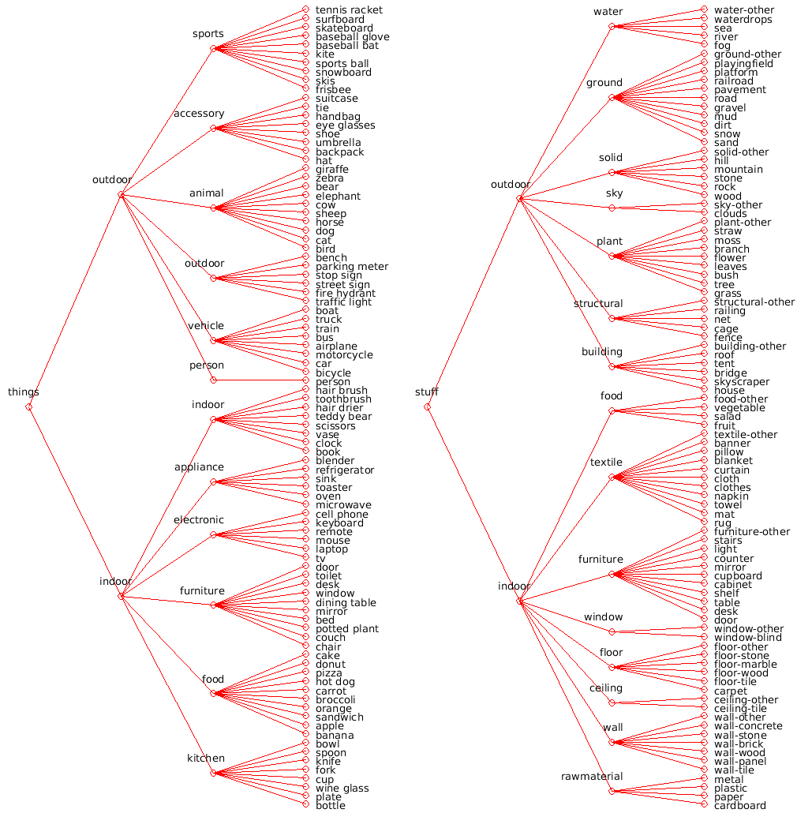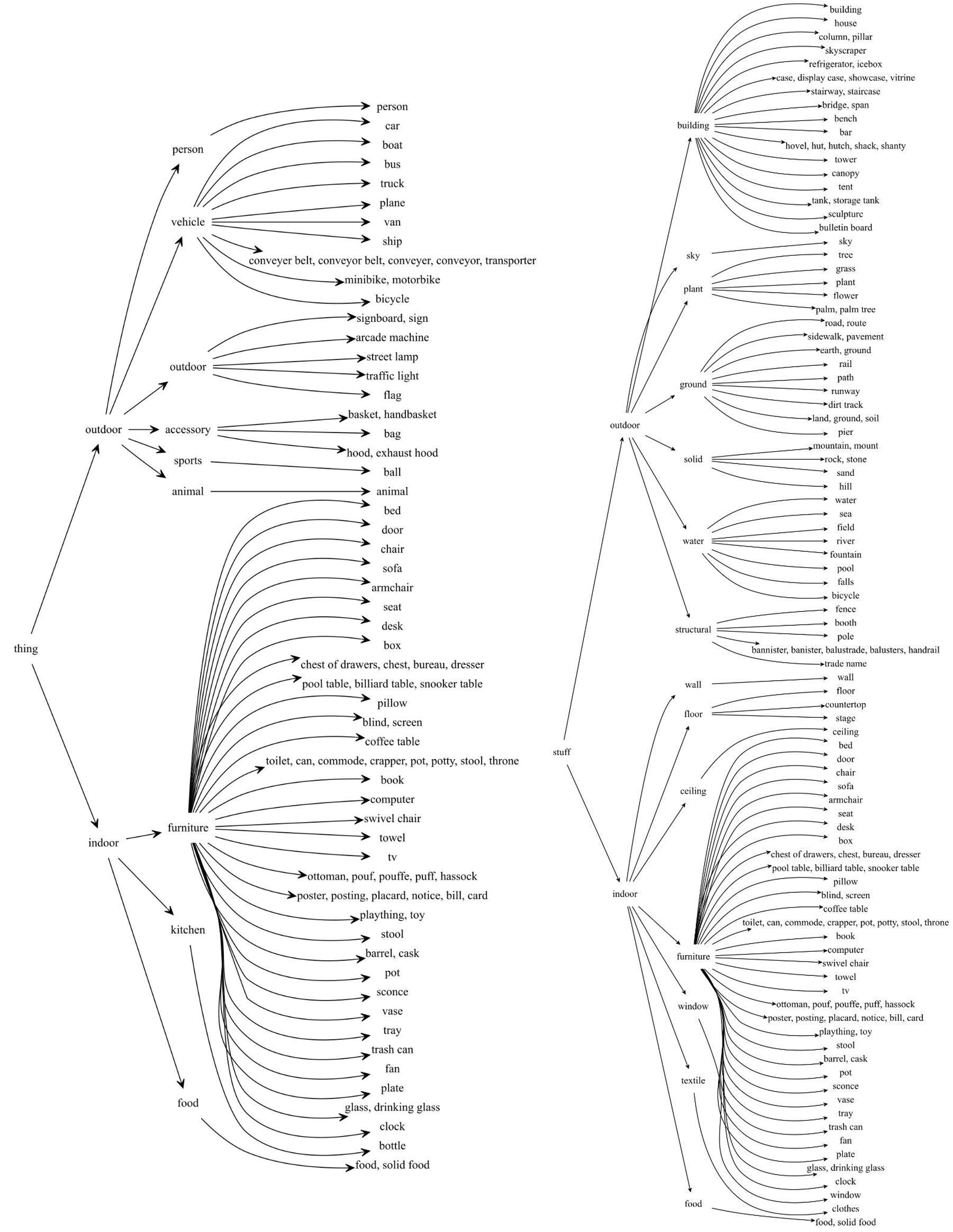[ECCV2022] A Simple Baseline for Open Vocabulary Semantic Segmentation with Pre-trained Vision-language Model
This repo is for our ECCV2022 paper A Simple Baseline for Open Vocabulary Semantic Segmentation with Pre-trained Vision-language Model. It is based on the official repo of MaskFormer.
🎉[News] Our new work Side Adapter Network for Open-Vocabulary Semantic Segmentation was accepted as CVPR2023 hightlight paper. Code has been released.
@article{xu2021,
title={A Simple Baseline for Open Vocabulary Semantic Segmentation with Pre-trained Vision-language Model},
author={Mengde Xu, Zheng Zhang, Fangyun Wei, Yutong Lin,Yue Cao, Han Hu, and Xiang Bai},
journal={Proceedings of the IEEE/CVF European Conference on Computer Vision (ECCV)},
year={2022}
}
-
torch==1.8.0 torchvision==0.9.0 detectron2==0.6 #Following https://detectron2.readthedocs.io/en/latest/tutorials/install.html to install it and some required packages mmcv==1.3.14FurtherMore, install the modified clip package.
cd third_party/CLIP python -m pip install -Ue .
-
In our experiments, five datasets are used.
- For Cityscapes and ADE20k, follow the tutorial in MaskFormer.
- For Pascal Context:
- Download data from the official website and extract it like below.
Datasets/ pcontext/ #http://host.robots.ox.ac.uk/pascal/VOC/voc2010/VOCtrainval_03-May-2010.tar JPEGImages/ #https://codalabuser.blob.core.windows.net/public/trainval_merged.json trainval_merged.json - Format the data to d2 style.
install detail packpage from https://github.com/zhanghang1989/detail-api and then
python datasets/prepare_pcontext_sem_seg.py --ori_root_dir datasets/pcontext-59 --save_dir datasets/pcontext-59
- Download data from the official website and extract it like below.
- For COCO Stuff 164k:
- Download data from the official dataset website and extract it like below.
Datasets/ coco/ #http://images.cocodataset.org/zips/train2017.zip train2017/ #http://images.cocodataset.org/zips/val2017.zip val2017/ #http://images.cocodataset.org/annotations/annotations_trainval2017.zip annotations/ #http://calvin.inf.ed.ac.uk/wp-content/uploads/data/cocostuffdataset/stuffthingmaps_trainval2017.zip stuffthingmaps/ - Format the data to d2 style and split it into Seen (Base) subset and Unseen (Novel) subset.
python datasets/prepare_coco_stuff_164k_sem_seg.py datasets/coco python tools/mask_cls_collect.py datasets/coco/stuffthingmaps_detectron2/train2017_base datasets/coco/stuffthingmaps_detectron2/train2017_base_label_count.pkl python tools/mask_cls_collect.py datasets/coco/stuffthingmaps_detectron2/val2017 datasets/coco/stuffthingmaps_detectron2/val2017_label_count.pkl
- Download data from the official dataset website and extract it like below.
- For Pascal VOC 11k:
- Download data from the offical dataset website and extract it like below.
datasets/ VOC2012/ #download http://host.robots.ox.ac.uk/pascal/VOC/voc2012/VOCtrainval_11-May-2012.tar and extract it here. JPEGImages/ # copy `ImageSets/Segmentation/val.txt` here. val.txt #Download auged annotations from http://www.eecs.berkeley.edu/Research/Projects/CS/vision/grouping/semantic_contours/benchmark.tgz and convert the original mat file to png format. Or download it from https://www.dropbox.com/s/oeu149j8qtbs1x0/SegmentationClassAug.zip?dl=0 (Provided in https://github.com/DrSleep/tensorflow-deeplab-resnet#evaluation). SegmentationClassAug/ #https://gist.githubusercontent.com/sun11/2dbda6b31acc7c6292d14a872d0c90b7/raw/5f5a5270089239ef2f6b65b1cc55208355b5acca/trainaug.txt train.txt- Format the data to d2 style and split it into Seen (Base) subset and Unseen (Novel) subset.
python datasets/prepare_voc_sem_seg.py datasets/VOC2012 python tools/mask_cls_collect.py datasets/VOC2012/annotations_detectron2/train_base datasets/VOC2012/annotations_detectron2/train_base_label_count.json python tools/mask_cls_collect.py datasets/VOC2012/annotations_detectron2/val datasets/VOC2012/annotations_detectron2/val_label_count.json
-
Before training and evaluation, see the tutorial in detectron2. For example, to training a zero shot semantic segmentation model on COCO Stuff:
-
Training with manually designed prompts:
# single prompt python train_net.py --config-file configs/coco-stuff-164k-156/zero_shot_maskformer_R101c_single_prompt_bs32_60k.yaml # imagenet prompt python train_net.py --config-file configs/coco-stuff-164k-156/zero_shot_maskformer_R101c_imagenet_prompt_bs32_60k.yaml # vild prompt python train_net.py --config-file configs/coco-stuff-164k-156/zero_shot_maskformer_R101c_vild_prompt_bs32_60k.yaml -
Training with learned prompts:
# Training prompts python train_net.py --config-file configs/coco-stuff-164k-156/zero_shot_proposal_classification_learn_prompt_bs32_10k.yaml --num-gpus 8 # Training seg model python train_net.py --config-file configs/coco-stuff-164k-156/zero_shot_maskformer_R101c_bs32_60k.yaml --num-gpus 8 MODEL.CLIP_ADAPTER.PROMPT_CHECKPOINT ${TRAINED_PROMPTS}
Note: the prompts training will be affected by the random seed. It is better to run it multiple times.
For evaluation, add
--eval-onlyflag to the traing command. -
Trained Model
-
For cross-dataset setting ( Train on seen classes and test on different datasets.) Trained Model
# TRAINED_MODEL_PATH: the path of your downlaoded model file. # train on coco 156 class, test on other dataset # Trained with # python train_net.py --resume --config-file configs/coco-stuff-164k-156/zero_shot_maskformer_R101c_vild_prompt_bs32_60k.yaml --num-gpus 8 MODEL.CLIP_ADAPTER.CLIP_ENSEMBLE True SOLVER.MAX_ITER 120000 # DATASET: the name of other datset, can be ade20k-150, ade20k-847, cityscapes-19, pcontext-59-59. Don't test on pascal voc as it overlaps with coco stuff largely. python train_net.py --eval-only --resume --config-file configs/${DATASET}/cross_dataset_test_only.yaml --num-gpus 8 MODEL.WEIGHTS ${TRAINED_MODEL_PATH}
-
For zero-shot setting ( Train on seen classes and test on unseen classes of the same dataset.) Trained Model
# TRAINED_MODEL_PATH: the path of your downloaded model file. # Trained with learned prompts python train_net.py --eval-only --config-file configs/coco-stuff-164k-156/zero_shot_maskformer_R101c_bs32_60k.yaml --num-gpus 8 MODEL.WEIGHTST ${TRAINED_MODEL_PATH}
Note: For both setting, the model are only trained on coco stuff 156 classes for convenient.
-
-
-
For visualization
You can use https://github.com/facebookresearch/detectron2/blob/main/tools/visualize_json_results.py to visualize the segmentation result.
-
Other information:
- COCO Stuff thing and stuff classes split ( copied from https://github.com/nightrome/cocostuff)

- ADE20k thing and stuff classes split ( following the same definition in [1], we also provide a text file containing all stuff classes):

- COCO Stuff thing and stuff classes split ( copied from https://github.com/nightrome/cocostuff)
[1] COCO-Stuff: Thing and Stuff Classes in Context H. Caesar, J. Uijlings, V. Ferrari, In Computer Vision and Pattern Recognition (CVPR), 2018.




